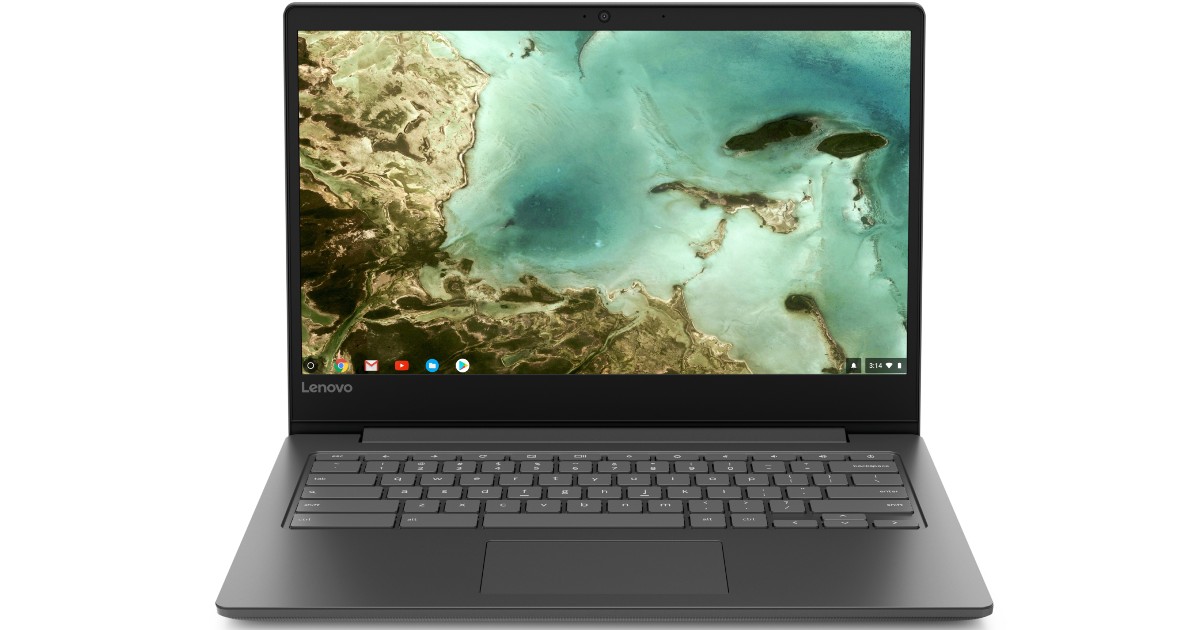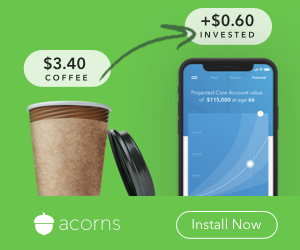In today's fast-paced world, the cost of transportation has become a significant factor affecting individuals' financial well-being. From daily commutes to work or school to occasional trips, transportation expenses can add up quickly, impacting personal budgets. However, there are innovative and practical ways to cut down on these costs and commute smarter. Let's explore strategies that not only save money but also contribute to a more sustainable and efficient lifestyle.
Transportation costs are a common concern for many individuals. Whether it's the daily grind of commuting to work or the occasional road trip, expenses related to transportation can take a toll on our wallets. In this article, we will delve into the various aspects of cutting the cost of transportation and how adopting smarter commuting practices can make a significant difference.
 Image credit: Pexels
Image credit: Pexels
Understanding Transportation Expenses
Before we explore ways to optimize transportation costs, it's essential to understand the breakdown of these expenses. From fuel costs and maintenance to public transportation fees, gaining insight into where your money goes can be the first step towards making informed decisions. These expenses can be categorized into several components:
Fuel Costs: This includes expenses related to purchasing fuel for vehicles, such as gasoline or diesel. The amount spent on fuel depends on factors like vehicle efficiency, distance traveled, and fuel prices.
Vehicle Maintenance: Regular maintenance is essential for keeping vehicles in good condition and ensuring they operate efficiently. Maintenance costs may include oil changes, tire rotations, brake repairs, and other servicing expenses.
Insurance Premiums: Vehicle insurance is a mandatory expense for drivers, covering costs in the event of accidents, theft, or damage. Premiums vary based on factors like driving history, vehicle type, and coverage options.
Vehicle Depreciation: Vehicles lose value over time due to wear and tear, mileage, and market fluctuations. Depreciation represents the decrease in a vehicle's value, which is a significant consideration for those looking to minimize transportation expenses.
Public Transportation Fees: For individuals using public transit systems like buses, trains, or subways, expenses include ticket fares or passes. These costs can add up, particularly for daily commuters who rely on public transportation for their daily travels.
Tolls and Parking Fees: Tolls are fees charged for using certain roads or bridges, while parking fees are incurred when parking vehicles in designated areas. These expenses are common for drivers who commute through toll roads or park in urban areas.
Vehicle Registration and Licensing: Registering and licensing vehicles with relevant authorities incur fees, which may vary depending on factors like vehicle type, location, and registration duration.
Miscellaneous Expenses: Other miscellaneous expenses may include car washes,
roadside assistance memberships, and unforeseen repairs or emergencies.
Understanding the breakdown of transportation expenses is crucial for individuals seeking to optimize their commuting costs. By identifying where the money goes, individuals can explore cost-saving strategies and make informed decisions to manage their transportation expenses effectively.
 Image credit: Pexels
Image credit: Pexels
Challenges in Traditional Commuting
Traditional commuting methods, such as driving alone to work, not only consume time but also contribute to environmental issues. The cost of maintaining a personal vehicle and the environmental impact of conventional transportation methods are challenges that need addressing. Here are some examples:
Time Consumption: Driving alone to work in traditional commuting methods often leads to significant time consumption. Traffic congestion, longer travel distances, and limited transportation options can result in extended commute times, reducing productivity and causing stress for commuters.
Environmental Issues: Conventional transportation methods, particularly single-occupancy vehicles, contribute to environmental degradation. Emissions from vehicles release harmful pollutants into the atmosphere, leading to air pollution and contributing to climate change. Additionally, reliance on fossil fuels for transportation contributes to resource depletion and environmental degradation.
Cost of Vehicle Maintenance: Maintaining a personal vehicle involves various expenses, including fuel costs, maintenance, insurance premiums, and depreciation. These costs can accumulate over time, impacting individuals' budgets and financial well-being. Additionally, unexpected repairs and breakdowns can further strain finances, adding to the challenges of traditional commuting.
Traffic Congestion: Urban areas often experience heavy traffic congestion during peak commuting hours, leading to delays and frustration for commuters. Traffic congestion not only wastes time but also increases fuel consumption and emissions, exacerbating environmental issues.
Addressing the challenges of traditional commuting requires exploring alternative transportation options and adopting sustainable commuting practices. By promoting carpooling, utilizing public transportation, embracing remote work, and investing in infrastructure for alternative modes of transportation such as cycling and walking, communities can mitigate the negative impacts of traditional commuting and create more efficient and sustainable transportation systems.
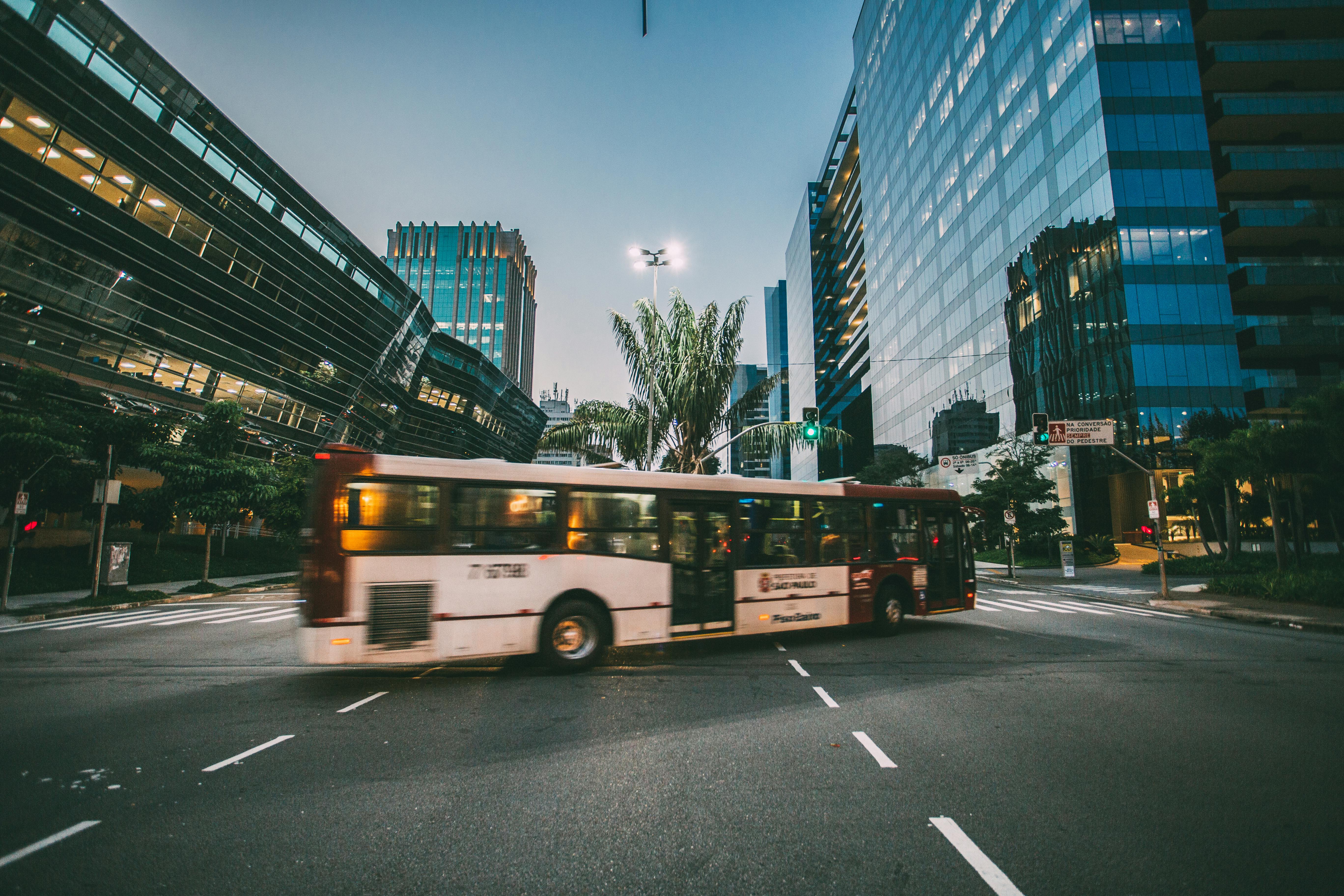 Image credit: Pexels
Image credit: Pexels
The Rise of Remote Work
The rise of
remote work presents a significant opportunity for individuals to save money on transportation expenses. By working remotely, individuals can reduce or eliminate their daily commutes altogether. This shift offers several key benefits:
Elimination of Commuting Costs: Remote work allows individuals to avoid daily commuting expenses, such as fuel costs, public transportation fares, tolls, and parking fees. By working from home or other remote locations, employees can save a substantial amount of money that would otherwise be spent on transportation.
Reduction in Vehicle Maintenance Costs: With fewer trips to and from the workplace, remote workers can reduce the wear and tear on their vehicles, leading to lower maintenance costs. This includes expenses for oil changes, tire replacements, and general vehicle servicing, contributing to long-term savings.
Decrease in Depreciation: Remote work reduces the need for regular vehicle usage, resulting in decreased mileage and slower depreciation rates. As a result, the value of vehicles may be preserved for a longer period, reducing the financial impact of vehicle depreciation on remote workers.
Savings on Other Transportation Expenses: In addition to direct commuting costs, remote work can lead to savings on other transportation-related expenses. This includes expenses for public transportation passes, ridesharing services, and alternative commuting options, further contributing to overall cost savings.
Overall, the rise of remote work offers individuals the opportunity to save money on transportation expenses while enjoying the flexibility and convenience of working from home or remote locations. By embracing remote work arrangements, individuals can achieve significant financial savings and improve their overall quality of life.
 Image credit: Pexels
Image credit: Pexels
Utilizing Public Transportation
Public transportation offers a cost-effective alternative to personal vehicles. Understanding the advantages and utilizing tips for affordable public commuting can significantly contribute to cutting transportation costs. Here's how:
Affordable Fare Options: Public transportation systems typically offer a range of fare options, including single-ride tickets, daily passes, and monthly or annual passes. Compared to the expenses associated with owning and maintaining a personal vehicle, public transit fares are often significantly lower, making them a more budget-friendly option for daily commuting.
Reduced Fuel and Maintenance Costs: By opting for public transportation, individuals can eliminate or reduce their reliance on personal vehicles, leading to savings on fuel and maintenance expenses. Public transit users do not have to worry about fuel prices, vehicle upkeep, or unexpected repair costs, resulting in long-term savings.
Avoidance of Parking Fees: Parking fees in urban areas can be expensive, especially for daily commuters. By using public transportation, individuals can avoid the hassle and cost of parking altogether, further reducing their transportation expenses.
Elimination of Vehicle Depreciation: Public transit users do not have to worry about vehicle depreciation, as they are not putting additional mileage on their personal vehicles. This can help preserve the value of their vehicles over time, minimizing the financial impact of depreciation.
Stress-Free Commuting: Public transportation allows individuals to relax during their commute, avoiding the stress of navigating traffic and dealing with road congestion. This can lead to improved mental well-being and increased productivity, enhancing overall quality of life.
Environmental Benefits: Choosing public transportation over personal vehicles can also have positive environmental impacts. Public transit produces fewer emissions per passenger mile compared to single-occupancy vehicles, helping to reduce air pollution and mitigate climate change.
Overall, by understanding the advantages of public transportation and utilizing tips for affordable commuting, individuals can significantly cut their transportation costs while enjoying a convenient and sustainable way to travel.
PRO TIP: Check out RVshare: Book an RV to Travel and Save on Your Next Family Vacation!
 Image credit: Pexels
Image credit: Pexels
Carpooling and Ride-Sharing Solutions
Carpooling and ride-sharing platforms have gained popularity for their cost-saving benefits. Exploring these options and understanding how they work can lead to substantial savings. Here's how:
Shared Expenses: Carpooling involves sharing a ride with others who have similar commuting routes or destinations. By sharing the costs of fuel, tolls, and parking fees among multiple passengers, carpoolers can significantly reduce their individual transportation expenses.
Splitting Costs: Ride-sharing platforms connect drivers with passengers heading in the same direction. Passengers contribute towards the cost of the trip, typically at a lower rate than traditional transportation options like taxis or ride-hailing services. This cost-sharing model allows both drivers and passengers to save money on transportation.
Reduced Wear and Tear: Carpooling and ride-sharing can help reduce the wear and tear on vehicles by spreading out the mileage among multiple drivers. This can lead to lower maintenance costs and extend the lifespan of vehicles, resulting in additional long-term savings.
HOV Lane Access: Many regions offer High-Occupancy Vehicle (HOV) lanes reserved for vehicles with multiple occupants, such as carpools and ride-shares. Access to HOV lanes can significantly reduce travel time by avoiding traffic congestion, further enhancing the cost-saving benefits of carpooling and ride-sharing.
Environmental Benefits: By reducing the number of single-occupancy vehicles on the road, carpooling and ride-sharing contribute to a reduction in greenhouse gas emissions and air pollution. This environmentally-friendly transportation option helps mitigate the negative impacts of transportation on the environment.
Convenient and Flexible: Carpooling and ride-sharing platforms offer convenience and flexibility for both drivers and passengers. Participants can schedule rides in advance or find real-time matches, making it easy to coordinate shared trips that fit their schedules.
Overall, exploring carpooling and ride-sharing solutions can lead to substantial savings on transportation expenses while promoting sustainability and reducing environmental impact. By embracing these cost-effective alternatives, individuals can enjoy the benefits of shared transportation while contributing to a more efficient and eco-friendly transportation system.
 Image credit: Pexels
Image credit: Pexels
Bicycling for Commuting
Beyond cost benefits, cycling presents a healthy and eco-friendly alternative. We'll explore the advantages of
bicycling for commuting and how infrastructure improvements support this mode of transportation. Here's an explanation:
Cost Savings: One of the most apparent benefits of bicycling for commuting is the significant cost savings compared to other modes of transportation. Cyclists do not need to purchase fuel, pay for public transportation fares, or cover parking fees. Additionally, the maintenance costs for bicycles are minimal compared to those for automobiles.
Health Benefits: Bicycling is an excellent form of exercise that provides numerous health benefits. Regular cycling improves cardiovascular health, strengthens muscles, and enhances overall fitness levels. Commuting by bike allows individuals to incorporate physical activity into their daily routines, leading to improved physical and mental well-being.
PRO TIP: Learn some more
health tips while you are here!
Environmental Sustainability: Bicycling is a sustainable and eco-friendly mode of transportation that produces zero emissions. By choosing to bike instead of driving or using public transportation, individuals can reduce their carbon footprint and contribute to mitigating climate change. Bicycling also helps decrease traffic congestion and air pollution in urban areas.
Convenience and Flexibility: Cycling offers flexibility and convenience for commuters. Bicycles can navigate through traffic more efficiently than cars, especially in congested urban areas. Cyclists can also access bike lanes, paths, and shortcuts that are not available to motor vehicles, allowing for faster and more direct routes to their destinations.
Improved Quality of Life: Commuting by bike can enhance overall quality of life for individuals. Cycling reduces stress levels, boosts mood, and promotes a sense of accomplishment. Additionally, cyclists often report feeling more connected to their surroundings and communities while biking, leading to increased social interaction and a greater appreciation for the environment.
Infrastructure Support: Infrastructure improvements, such as bike lanes, bike racks, and bike-sharing programs, play a crucial role in supporting bicycling for commuting. Cities and municipalities are increasingly investing in cycling infrastructure to make cycling safer, more accessible, and more attractive as a transportation option. These improvements encourage more people to choose bicycling as a viable mode of commuting.
In summary, bicycling for commuting offers a wide range of benefits, including cost savings, improved health, environmental sustainability, convenience, and enhanced quality of life. With the support of infrastructure improvements, cycling continues to emerge as a practical and appealing alternative for individuals seeking a healthier, more sustainable, and more enjoyable way to commute.
 Image credit: Pexels
Image credit: Pexels
Embracing Electric Vehicles (EVs)
The accessibility of electric vehicles (EVs) and the growing infrastructure for EV charging stations make them a viable option. Embracing electric vehicles (EVs) presents a compelling opportunity for individuals to save money while contributing to a cleaner environment. Here's an explanation of how:
Cost Savings: While the initial purchase price of EVs may be higher than traditional gasoline-powered vehicles, EV owners can enjoy significant long-term cost savings. Electric vehicles have lower operating costs since electricity is generally cheaper than gasoline. Additionally, EVs have fewer moving parts and require less maintenance than internal combustion engine vehicles, leading to reduced maintenance expenses over time.
Government Incentives: Many governments offer incentives and subsidies to encourage the adoption of electric vehicles. These incentives may include tax credits, rebates, reduced registration fees, and access to HOV lanes. Taking advantage of these incentives can further reduce the upfront cost of purchasing an EV and contribute to overall cost savings.
Fuel Savings: Electric vehicles are more energy-efficient than conventional gasoline-powered vehicles, translating to lower fuel costs for EV owners. Charging an EV at home is typically cheaper than filling up a gas tank at the pump, especially when electricity rates are lower during off-peak hours. EV owners can also save on fuel expenses by utilizing public charging stations or workplace charging facilities, which may offer free or discounted charging options.
Environmental Benefits: Electric vehicles produce zero tailpipe emissions, significantly reducing greenhouse gas emissions and air pollution compared to gasoline-powered vehicles. By driving an EV, individuals can contribute to improving air quality and mitigating climate change. Additionally, the use of renewable energy sources for charging EVs further enhances their environmental benefits, as it reduces reliance on fossil fuels.
Infrastructure Development: The growing infrastructure for EV charging stations makes electric vehicles a more viable option for consumers. Charging infrastructure is becoming increasingly widespread, with charging stations available in public areas, workplaces, shopping centers, and residential communities. This expanding network of charging infrastructure enhances the convenience and accessibility of EV ownership, making it easier for individuals to transition to electric vehicles.
In summary, embracing electric vehicles offers a range of cost-saving benefits, including lower fuel and maintenance costs, access to government incentives, and reduced environmental impact. With the growing accessibility of EVs and the development of charging infrastructure, electric vehicles represent a sustainable and economically viable transportation option for individuals looking to save money while reducing their carbon footprint.
 Image credit: Pexels
Image credit: Pexels
Flexible Work Schedules
Employer initiatives that support
flexible work hours can have a direct impact on reducing transportation expenses. Flexible work schedules refer to arrangements where employees have the freedom to adjust their work hours and location to better accommodate their personal needs and responsibilities. Here's an explanation of how flexible work schedules contribute to reducing transportation expenses:
Reduced Commuting Frequency: With flexible work schedules, employees have the option to work remotely part-time or full-time, reducing the frequency of their daily commutes. By telecommuting a few days a week or month, individuals can significantly lower their transportation expenses, including fuel costs, public transportation fares, and vehicle maintenance expenses.
Avoidance of Peak Travel Times: Flexible work schedules allow employees to avoid peak travel times, such as rush hours in the morning and evening. By starting and ending work at different times, individuals can bypass heavy traffic congestion and reduce their commute times. This not only saves time but also minimizes stress and frustration associated with sitting in traffic jams.
Cost Savings on Transportation Modes: Employees with flexible work schedules may opt for alternative transportation modes that are more cost-effective than driving alone, such as carpooling, biking, or using public transportation. By choosing these options, individuals can save money on fuel, parking fees, and vehicle maintenance while reducing their carbon footprint and contributing to a more sustainable environment.
Increased Work-Life Balance: Flexible work schedules promote a better work-life balance by giving employees greater control over their time and allowing them to balance work commitments with personal and family responsibilities. This improved balance can lead to higher job satisfaction, reduced stress, and increased productivity, ultimately benefiting both employees and employers.
Retention and Recruitment: Offering flexible work schedules can enhance employee satisfaction and retention rates, as it demonstrates an employer's commitment to supporting employees' diverse needs and lifestyles. Additionally, flexible work arrangements can attract top talent by providing a competitive edge in recruitment efforts and appealing to individuals seeking work-life balance and flexibility.
In summary, flexible work schedules offer numerous benefits, including reduced transportation expenses, improved work-life balance, increased productivity, and enhanced employee satisfaction and retention. By embracing flexible work arrangements, employers can create a more adaptable and inclusive work environment while helping employees save money and improve their overall quality of life.
 Image credit: Pexels
Image credit: Pexels
Budget-Friendly Commuting Tips
For those who cannot entirely eliminate commuting, adopting budget-friendly tips can make a substantial difference. Budget-friendly commuting tips are strategies that help individuals reduce transportation expenses without compromising their daily commute. Here are some examples:
Use Public Transportation: Opting for public transportation, such as buses, trains, or subways, can be a cost-effective alternative to driving alone. Many cities offer discounted fare options for regular commuters, such as monthly passes or bulk ticket purchases. Using public transportation allows individuals to save money on fuel, parking fees, and vehicle maintenance.
Carpooling: Sharing rides with coworkers, friends, or neighbors through carpooling can significantly reduce transportation costs. By splitting fuel expenses and taking turns driving, carpoolers can save money on fuel and parking while also reducing vehicle wear and tear. Additionally, carpooling may provide access to HOV lanes, further cutting down commute times.
Bicycling: Bicycling to work is not only a budget-friendly option but also promotes physical fitness and reduces environmental impact. Investing in a reliable bicycle and necessary safety gear upfront may seem costly, but the long-term savings on fuel, parking, and vehicle maintenance make it a worthwhile investment. Many cities are also improving bike infrastructure, making cycling safer and more accessible.
Walkable Commute: Living within walking distance of your workplace or public transportation hub eliminates the need for a car altogether. While this may not be feasible for everyone, choosing a home location with proximity to amenities and transportation options can lead to significant cost savings over time.
Telecommuting: Working remotely, either full-time or part-time, can eliminate the need for daily commuting altogether. Remote work allows individuals to save money on transportation expenses, as well as other costs associated with commuting, such as work attire, lunches, and childcare. Employers increasingly offer telecommuting options, providing flexibility and cost savings for both employees and employers.
Flexible Work Hours: Negotiating flexible work hours with your employer can help you avoid peak commuting times, reducing stress and saving time and money on transportation. By starting and ending work earlier or later than traditional hours, you may experience smoother traffic conditions and have more options for affordable transportation modes, such as public transit or carpooling.
Incorporating these budget-friendly commuting tips into your daily routine can lead to significant cost savings over time while also promoting environmental sustainability and improving overall well-being. By making small changes to your commuting habits, you can enjoy the long-term financial benefits and contribute to a healthier and more affordable lifestyle.
 Image credit: Pexels
Image credit: Pexels
Technological Solutions for Commuters
Advancements in technology have given rise to apps and tools that aid in efficient route planning and provide real-time traffic updates. Understanding and utilizing these technological solutions can lead to smarter commuting decisions. Here's an explanation along with examples:
Route Planning Apps: These apps help commuters find the most efficient route to their destination by considering factors such as traffic conditions, road closures, and alternative routes. Examples include Google Maps, Waze, and Apple Maps, which provide real-time navigation and route recommendations based on current traffic data.
Public Transit Apps: Apps dedicated to public transportation systems offer schedules, route maps, and real-time updates on bus and train arrivals. Commuters can plan their trips more effectively and avoid waiting unnecessarily at transit stops. Examples include
Transit,
Moovit, and
Citymapper, which cover various cities and regions worldwide.
Ride-Sharing Apps: Ride-sharing platforms connect commuters with drivers heading in the same direction, offering a convenient and cost-effective alternative to traditional transportation modes. Examples include
Uber,
Lyft, and
BlaBlaCar, which allow users to request rides on-demand or schedule carpools in advance.
Parking Apps: Finding parking in urban areas can be challenging and costly. Parking apps provide information on available parking spots, rates, and parking garages near the destination. Examples include
ParkMobile,
SpotHero, and
ParkWhiz, which enable users to reserve parking spaces in advance and save time and money on parking fees.
Bike Share and Rental Apps: For cyclists, bike share and rental apps offer access to shared bikes for short-term use. Users can locate available bikes, unlock them using the app, and return them to designated docking stations after use. Examples include
Citi Bike,
Lime, and
Bird, which operate bike-sharing programs in cities around the world.
Traffic Monitoring Apps: These apps provide real-time updates on traffic conditions, accidents, and road closures, allowing commuters to adjust their routes accordingly and avoid congestion. Examples include
INRIX Traffic, and
TomTom Traffic, which offer live traffic maps and incident alerts to help users navigate more efficiently.
By understanding and utilizing these technological solutions, commuters can make smarter decisions, save time and money, and enjoy a more seamless and enjoyable commuting experience. Whether it's finding the fastest route, sharing rides with others, or accessing alternative transportation options, technology empowers commuters to optimize their journeys and make the most of their time on the road.
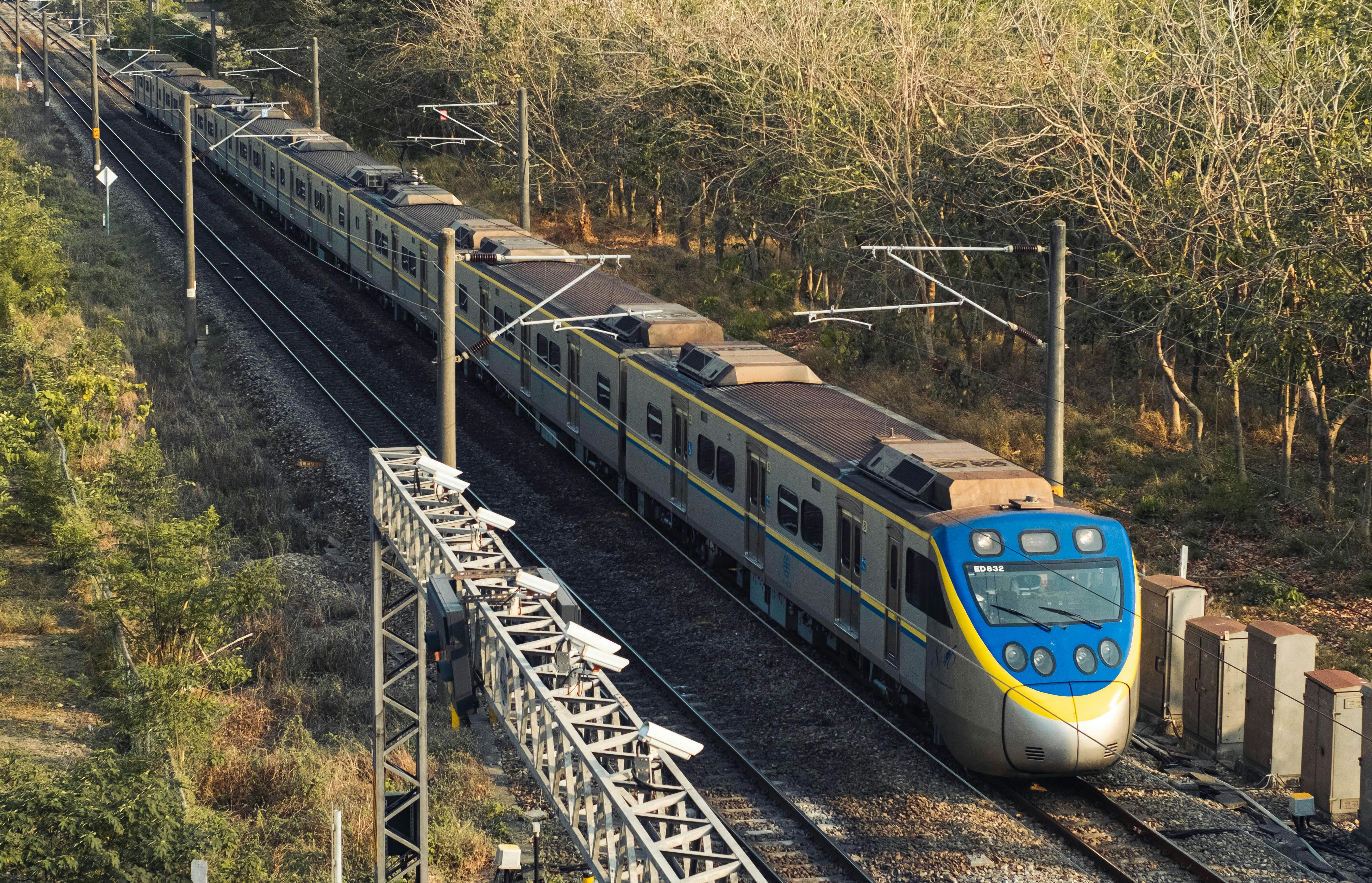 Image credit: Pexels
Image credit: Pexels
Community Initiatives for Sustainable Commuting
Local community programs often promote eco-friendly transportation options. Getting involved in these initiatives not only supports sustainability but can also contribute to cost-effective commuting solutions. Here's an explanation along with examples:
Bike Share Programs: Many communities operate bike share programs that provide residents with access to shared bicycles for short-term use. These programs typically feature docking stations located throughout the community, allowing users to rent bikes for commuting, errands, or recreational rides. Participating in a bike share program encourages cycling as a sustainable and cost-effective mode of transportation.
Public Transit Advocacy: Community groups and organizations often advocate for improvements to public transportation systems, such as expanded service routes, increased frequency of buses or trains, and enhanced accessibility for individuals with disabilities. By supporting public transit advocacy efforts, residents can help make public transportation more convenient, reliable, and accessible for all members of the community.
Car-Free Initiatives: Some communities organize events or initiatives that promote car-free living and encourage residents to explore alternative transportation options, such as walking, cycling, or using public transit. Car-free days, pedestrian-friendly street festivals, and carpooling challenges are examples of initiatives that raise awareness about the benefits of reducing reliance on automobiles and encourage sustainable commuting practices.
Safe Routes to School Programs: Safe Routes to School programs aim to promote walking and biking as safe and viable transportation options for students traveling to and from school. These programs often involve infrastructure improvements, such as the installation of sidewalks, crosswalks, and bike lanes, as well as educational initiatives that teach students about pedestrian and bicycle safety. Supporting Safe Routes to School programs helps create safer and healthier communities while reducing traffic congestion around schools.
Employer Commuter Benefits: Community initiatives may also focus on encouraging employers to offer commuter benefits and incentives to their employees, such as subsidized transit passes, bike parking facilities, or telecommuting options. By working with local businesses to implement commuter-friendly policies, communities can help reduce traffic congestion, improve air quality, and support sustainable commuting practices among the workforce.
Getting involved in community initiatives for sustainable commuting not only supports environmental conservation efforts but also contributes to cost-effective transportation solutions that benefit the entire community. By advocating for improved public transportation, promoting alternative transportation options, and encouraging businesses to adopt commuter-friendly policies, residents can help create more sustainable and livable communities for future generations.
 Image credit: Pexels
Image credit: Pexels
Balancing Convenience and Cost
Finding a balance between convenience and cost is crucial. Balancing convenience and cost in commuting is essential for creating a sustainable and efficient transportation strategy that meets individual needs and preferences. Here's an explanation along with personalized approaches:
Evaluate Transportation Options: Assessing available transportation options based on factors such as distance, travel time, cost, and convenience is the first step in finding a balance between convenience and cost. Consider whether driving alone, carpooling, using public transit, biking, or walking aligns best with your commuting needs and budget.
Prioritize Time and Convenience: For individuals with busy schedules or long commute distances, prioritizing time and convenience may outweigh cost considerations. In such cases, opting for faster and more convenient transportation modes, such as driving or using ride-sharing services, may be worth the additional expense to save time and minimize stress.
Cost-Effective Alternatives: Explore cost-effective alternatives to traditional commuting methods that still offer convenience and flexibility. This could include carpooling with coworkers or neighbors to share transportation expenses, using public transit with discounted fare options, or telecommuting part-time to reduce commuting costs.
Utilize Technology: Take advantage of technology tools and apps that help optimize commuting decisions based on cost and convenience. Route planning apps, real-time traffic updates, and ride-sharing platforms can help individuals make informed choices that balance time savings with cost savings.
Flexible Work Arrangements: Negotiate flexible work arrangements with employers that allow for adjusted work hours, telecommuting options, or compressed workweeks. This flexibility can help individuals better balance their commuting needs with work responsibilities while reducing transportation costs and improving work-life balance.
Personalized Commuting Strategies: Tailor commuting strategies to individual preferences and lifestyle factors. For example, combining different transportation modes, such as biking to a transit station or driving to a park-and-ride facility, can offer a balance between cost-effectiveness and convenience while accommodating specific commuting needs.
Regular Review and Adjustment: Regularly review and adjust commuting strategies based on changing circumstances, such as work schedules, living arrangements, or transportation options. Continuously reassessing commuting needs and exploring new alternatives ensures that individuals maintain a balanced approach to commuting that meets both cost and convenience requirements.
By adopting personalized approaches to commuting smarter and considering individual preferences, needs, and circumstances, individuals can strike a balance between convenience and cost that optimizes their commuting experience while minimizing expenses and environmental impact.
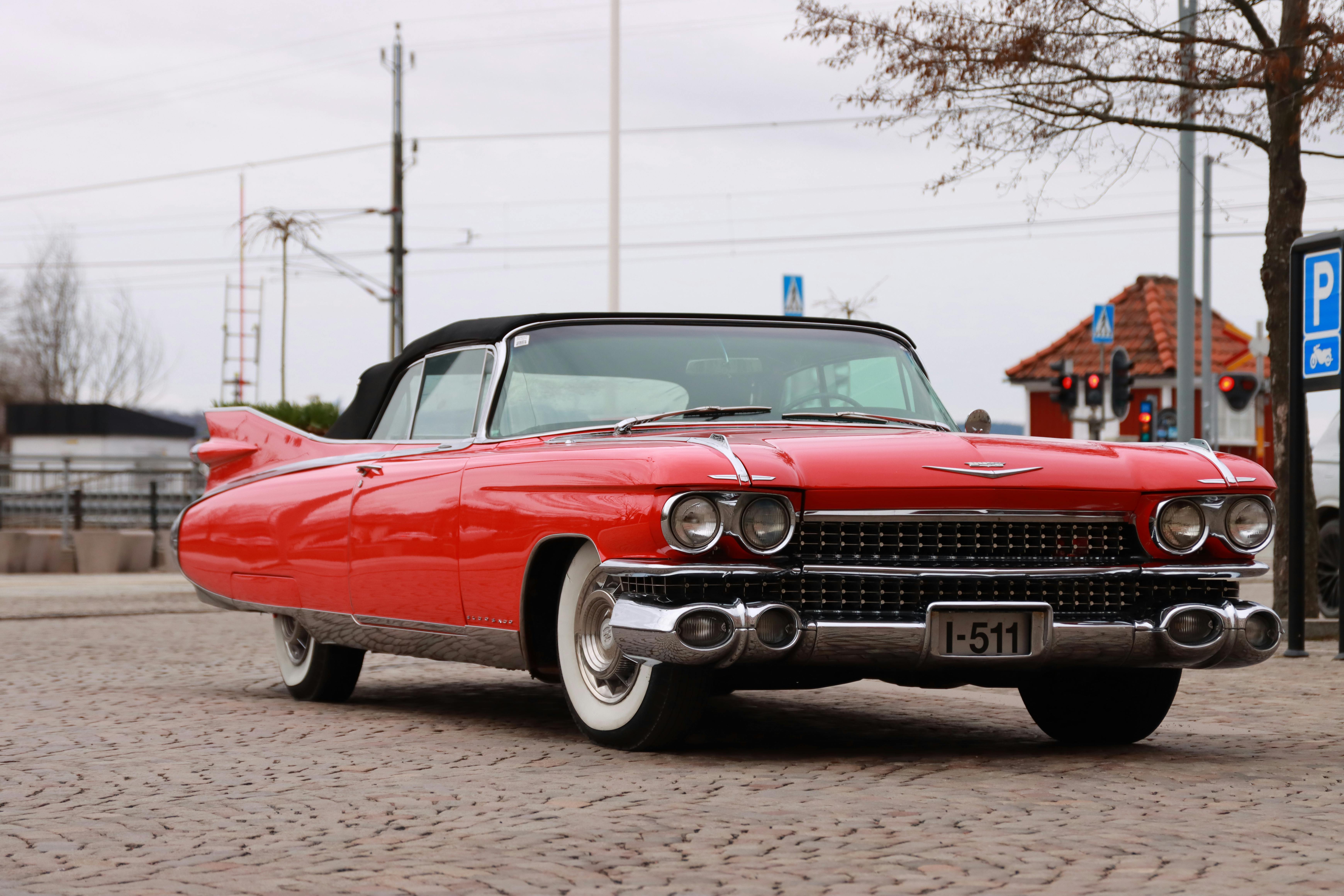 Image credit: Pexels
Image credit: Pexels
Conclusion
In conclusion, cutting the cost of transportation requires a strategic and mindful approach. By understanding transportation expenses, embracing alternative commuting methods, and incorporating cost-saving strategies, individuals can make a positive impact on their budgets and the environment. Commuting smarter is not just about saving money; it's about adopting a lifestyle that is sustainable and efficient.
 Image credit: Pexels
Image credit: Pexels
FAQs (Frequently Asked Questions)
Q: How much can I save by adopting public transportation for daily commuting?
A: The savings depend on various factors, but many individuals report significant reductions in transportation expenses by utilizing public transit.
Q: Are electric vehicles really cost-effective in the long run?
A: Yes, while the initial cost may be higher, the long-term savings on fuel and maintenance make electric vehicles a cost-effective choice.
Q: Can flexible work schedules genuinely reduce commuting expenses?
A: Absolutely. Flexible work schedules allow individuals to avoid peak commuting hours and may even lead to fewer commuting days.
Q: How can I find local community initiatives for sustainable commuting?
A: Check with local government websites, community centers, and environmental organizations for information on ongoing initiatives.
Q: What are some budget-friendly tips for daily commuters?
A: Tips include carpooling, efficient route planning, and exploring employer-sponsored commuting benefits.
If you like Amazon deals & coupon codes join my Telegram Channel (It's FREE!)! Sign up here!
═════════════════════════════════
PROMOTE YOUR BRAND WITH US!
═════════════════════════════════
═════════════════════════════════
FOLLOW CFS ON SOCIAL MEDIA
═════════════════════════════════
|
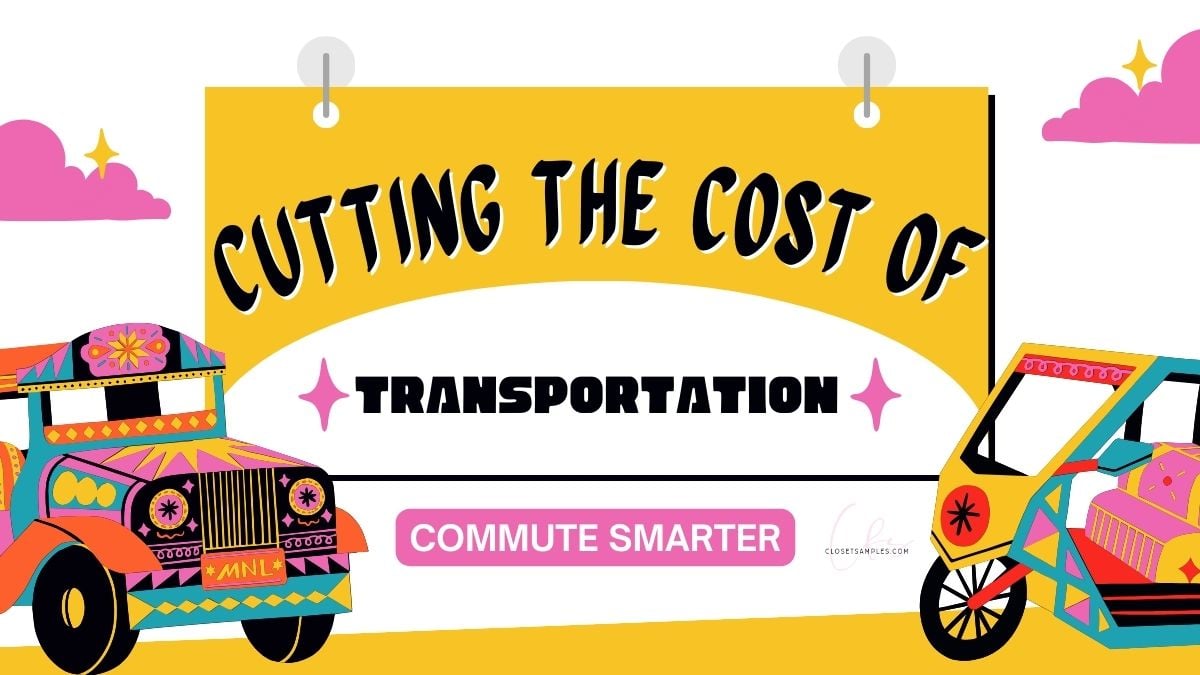
 Image credit: Pexels
Image credit: Pexels Image credit: Pexels
Image credit: Pexels Image credit: Pexels
Image credit: Pexels Image credit: Pexels
Image credit: Pexels Image credit: Pexels
Image credit: Pexels Image credit: Pexels
Image credit: Pexels  Image credit: Pexels
Image credit: Pexels  Image credit: Pexels
Image credit: Pexels  Image credit: Pexels
Image credit: Pexels  Image credit: Pexels
Image credit: Pexels  Image credit: Pexels
Image credit: Pexels  Image credit: Pexels
Image credit: Pexels  Image credit: Pexels
Image credit: Pexels  Image credit: Pexels
Image credit: Pexels 


 Here you will find all the best coupon advice, tips and how to make the most of all your coupons!
Here you will find all the best coupon advice, tips and how to make the most of all your coupons! Are you looking for ways to stretch your dollar?
Are you looking for ways to stretch your dollar? 

















